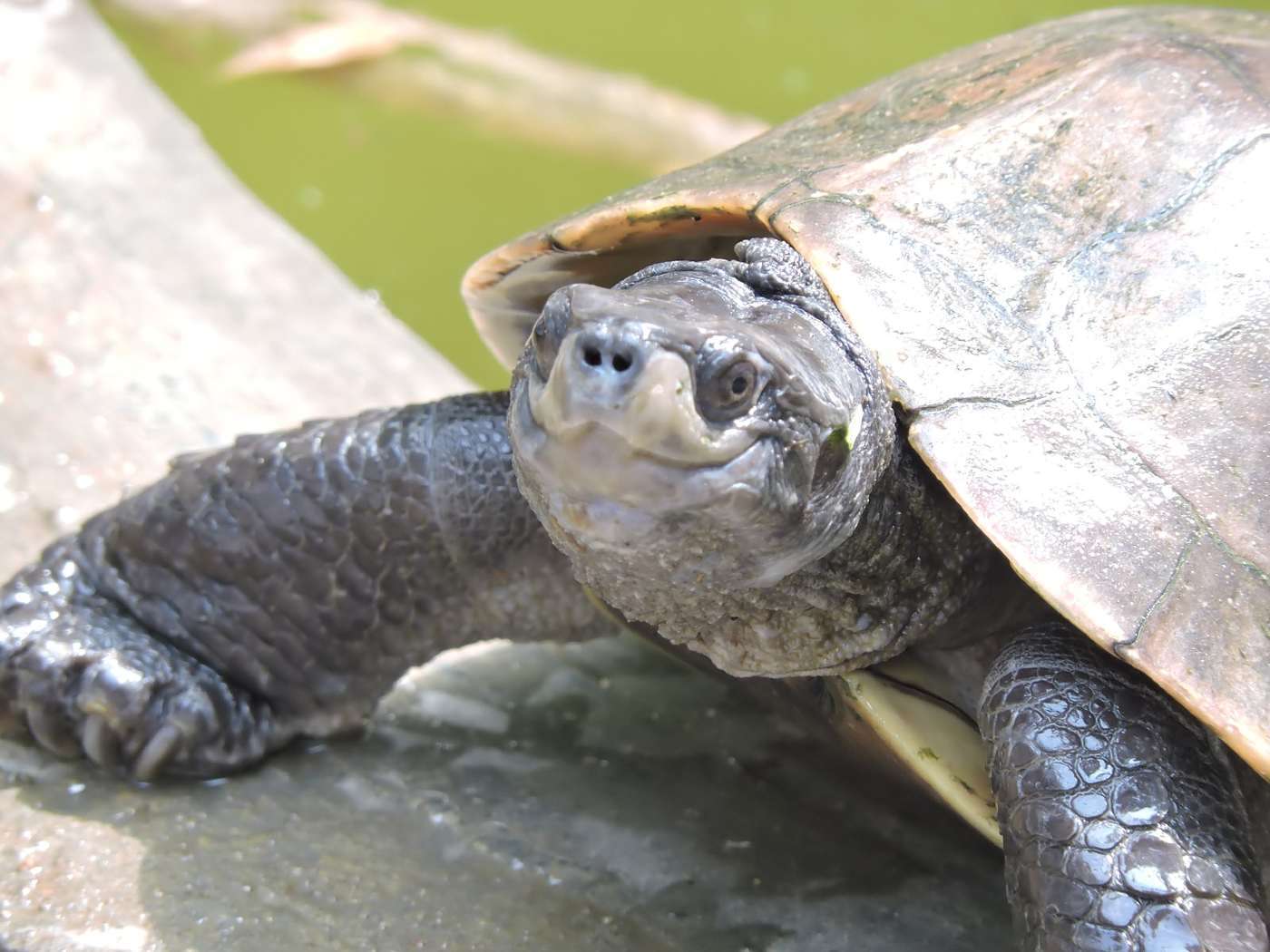Fight to Save Frogs Energized by New Research
Led by the Smithsonian Institution, zoos in the US, Panama and Mexico are reenergizing the effort to save frogs from a new fungus blamed for the death of dozens of species.

With faces straight out of Dr. Seuss, the cheeky beaks of Burmese roofed turtle hatchlings are characterized by what's been described as a nonstop grin. These days, the turtles have plenty of reasons to be cheerful.
Not long ago, however, the existence of species, native to Myanmar's Irrawaddy river region, was in serious doubt.
Over-hunting for food, medicinal use, and the pet trade, as well as reckless egg harvesting, improper electro-fishing techniques, and destruction of natural turtle habitat had all but wiped the once-flourishing reptiles from the face of the planet.
In fact, by the 1990s, the species was thought to be extinct. It wasn't until 2001, when a likely smuggled specimen turned up in a Hong Kong pet shop, that conservationists began to hope at least some small portion of their population had survived.
Heartened by the news, biologist Gerald Kuchling, who's now with the University of Western Australia, along with the Myanmar Forest Department launched a joint survey expedition of the upper Chindwin River, a site Burmese roofed turtles were once known to inhabit.
Not long ago, however, the existence of species, native to Myanmar's Irrawaddy river region, was in serious doubt.
Over-hunting for food, medicinal use, and the pet trade, as well as reckless egg harvesting, improper electro-fishing techniques, and destruction of natural turtle habitat had all but wiped the once-flourishing reptiles from the face of the planet.
In fact, by the 1990s, the species was thought to be extinct. It wasn't until 2001, when a likely smuggled specimen turned up in a Hong Kong pet shop, that conservationists began to hope at least some small portion of their population had survived.
Heartened by the news, biologist Gerald Kuchling, who's now with the University of Western Australia, along with the Myanmar Forest Department launched a joint survey expedition of the upper Chindwin River, a site Burmese roofed turtles were once known to inhabit.
Sadly, the project was sidelined by a summer monsoon.
On one of his days off, Dr. Kuchling happened to visit a turtle pond at a Buddhist temple in Mandalay. To his infinite surprise, he found three of the elusive critters smiling up at him from the murky water. "I was very excited and definitely flabbergasted," he said.
With the blessing of the temple board, Dr. Kuchling and his Burmese colleagues moved one male and two female turtles to the Mandalay Zoo.
Later, while exploring the Dokhtawady, a tributary of the Irrawaddy, Dr. Kuchling discovered even more specimens which were also transported to the zoo. This was in the nick of time too, as a damnable damming project destroyed their habitat soon after.
While there were thought to be less than 10 Burmese roofed turtles—five or six adult females and perhaps two adult males—living in the wild, not all of them made the trip.
CHECK OUT: Super Rare Wolverines Haven't Been Seen For a Century in Mt. Rainier—Now They're Back in a Family Way
When fishermen on the upper Chindwin River reported a handful of females still nested there during the dry season, Dr. Kuchling, along with the Forest Department and the Wildlife Conservation Society (WCS), organized and implemented a conservation stewardship program for the site.
Each year since, the beach has been fenced off by seasonally hired villagers who then track nesting females and carefully harvest their eggs. "We came so close to losing them," WCS herpetologist Steven G. Platt, told The New York Times. "If we didn't intervene when we did, this turtle would have just been gone."
Thanks to subsequent WCS efforts and the Turtle Survival Alliance, approximately 1,000 of the turtles have been successfully raised in captivity and are soon to be released into the wild. The WCS reports the species faces "little danger of biological extinction" at this point.
On hearing rumors of his alleged demise, humorist Mark Twain famously quipped, "The report of my death was an exaggeration." No doubt his public was tickled at the time, but we think bringing these cheerful turtles back from the brink of extinction will give everyone a reason to smile—including the turtles.
SHARE The Smiles And Pass This Story On To Your Friends…
Be the first to comment